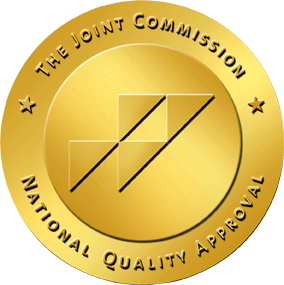Combining Ativan and alcohol can cause additive effects and associated risks that can be dangerous or even life-threatening.
If you or a loved one has ever used prescription medications with alcohol, you are not alone. Mixing alcohol with prescription medications can be very dangerous but also very common. A National Survey on Drug Use and Health estimates nearly 55% of individuals used alcohol within the last month. Further analysis shows about 42% of current drinkers also take a medication known to interact with alcohol. It is important to be aware of these interactions and the potential for harm.
[rehab-location-widget]
Benzodiazepines like lorazepam are sometimes used to help manage alcohol withdrawal, which may be a source of confusion. It is important to make the distinction that lorazepam should not be used by those currently drinking. This interaction increases the risk of serious side effects.

It's time to get your life back.
Whether you are struggling with addiction, mental health or both, our expert team is here to guide you every step of the way. Don’t wait— reach out today to take the first step toward taking control of your life.
What Is Ativan (Lorazepam)?
Ativan (often prescribed in its generic form, lorazepam) is a benzodiazepine. These medications act as depressants in the central nervous system or CNS. Neurons fire less frequently, which can “slow things down” and promote calm. This effect provides help with managing different conditions, including:
- Short-term anxiety
- Insomnia
- Seizures
- Alcohol withdrawal
However, the beneficial effects are not without risks, and lorazepam is often prescribed for relatively short periods for this reason. The side effects of lorazepam align primarily with CNS depression overall and can include:
- Risk of dependency
- Lowered inhibitions
- Respiratory depression (shallow, difficult breathing)
- Cognitive / memory impairment
- Confusion
- Sedation
- Dizziness, increased risk of falls
These symptoms can become more pronounced when combined with other medications or substances with similar effects. This is why using multiple CNS depressants is dangerous and can become life-threatening.
Lorazepam and Alcohol Interactions
Using alcohol and benzodiazepines like lorazepam at the same time presents problems because alcohol also acts as a CNS depressant. Recently, this has become a concern for other CNS depressants like opioid pain medications. Alcohol and lorazepam act on some of the same receptors within the brain (GABA receptors, for instance), and the effects add up. The higher the dose and the number of CNS depressants, the greater the effect.
Using lorazepam and alcohol increases the likelihood of developing more serious CNS-related side effects. This has real-world implications over time, impacting emergency room visits and drug-related deaths.
Considering this risk, many people have questions related to the timing of using alcohol and benzodiazepines and whether they can be mixed at all.
Can You Drink Alcohol on Ativan?
Because of the additive effects of Ativan and alcohol and the associated risks, the two should not be used together. Using lorazepam or other benzodiazepines is also generally not advised for those recovering from previous unhealthy use of alcohol, aside from professionally assisted withdrawal treatment.
If you and your doctor are okay with you using alcohol or Ativan occasionally, care should be taken to ensure the two have adequate time between uses.
How Long After Taking Ativan Can You Drink?
Ativan is processed in the body at different rates depending on the person. Peak levels are generally seen after about two hours, and the active half-life is about 12 hours. It is important to keep in mind that this is an average. The true range of the half-life includes those who clear the medication significantly faster and slower.
Additional caution should be taken by adults over 65 because CNS depression effects (drowsiness, confusion, risk of falls) can be more pronounced. Older adults may also clear lorazepam from their system more slowly.
It is best to consult your doctor before drinking if you take Ativan. If it is agreed that you can drink safely, the best way to ensure your safety is to wait until the following day (or at least 12 hours) to drink alcohol if you have taken a dose of lorazepam.
How Long After Drinking Can You Take Lorazepam?
Several factors influence alcohol metabolism in the body, including:
- Empty stomach vs. full stomach
- Individual variability in enzymes — genetics, etc.
- How much and how fast alcohol is consumed
Alcohol levels will likely be higher if you drink on an empty stomach, giving credit to the saying, “Never drink on an empty stomach.” Once absorbed (and partially in the digestive tract directly), alcohol is processed by an enzyme called ADH, or alcohol dehydrogenase. The amount of ADH available to process alcohol can vary by individual.
Over time, metabolizing alcohol has been described primarily as linear. When drinking an alcoholic beverage, the body’s ADH enzymes are likely required to operate at full capacity. Under these conditions, the average amount of alcohol processed per hour is about 7 grams or one drink per hour. The more you drink, the longer it will take to be cleared.
Ultimately, it is recommended to discuss any plans for drinking alcohol with your doctor if you are prescribed lorazepam. This will help you develop a personalized plan that considers your overall health.
Dangers of Mixing Ativan and Alcohol
Mixing two CNS depressants will strengthen their effects. If these effects add up too much, the results can be dangerous.
Blackouts
Among the potential side effects of CNS depression are memory impairment and lowered inhibitions. Memory impairment can sometimes be experienced as acute amnesia or “blacking out” for a period. In some cases, behavior may also be impacted. For instance, alcohol has been associated with violent crimes, potentially related to lowered inhibitions.
Increased Risk of Injury
Increased sedation and dizziness make fall injuries more likely. Some of these effects can be seen directly through studies suggesting an increased risk of bone fracture with benzodiazepine use. There is also a significant impact on motor vehicle accidents, with 30% of fatal crashes involving alcohol and 54% of seriously injured drivers testing positive for alcohol and/or drugs. Using lorazepam and alcohol together increases impairment.
Slowed Breathing and Heart Rate
Slowed breathing is often referred to as respiratory depression and has become a prominent concern related to medications in recent years. The primary focus so far has been on the use of opioids, but respiratory depression is a potential concern for all CNS depressants, particularly when combined.
When lorazepam and alcohol are mixed, the risks are higher for impaired breathing and reduced heart rate. These symptoms can lead to hospitalization and be fatal.
Overdose
The risk of combining benzodiazepines and alcohol can be more severe in some instances. Studies suggest that 72% of deaths caused by benzodiazepine overdoses involve alcohol. Some deaths may have been preventable with knowledge of these risks and improved support.
Help for Ativan and Alcohol Addiction
If you or someone you care about is struggling with Ativan or alcohol, quality, supportive and non-judgmental help is available. The Recovery Village Kansas City offers residential rehab programs providing the level of care that would be most helpful for you as an individual and empowering you to regain control of the things that matter most in your life. Contact a Recovery Advocate today to get started on the path to a substance-free life.











